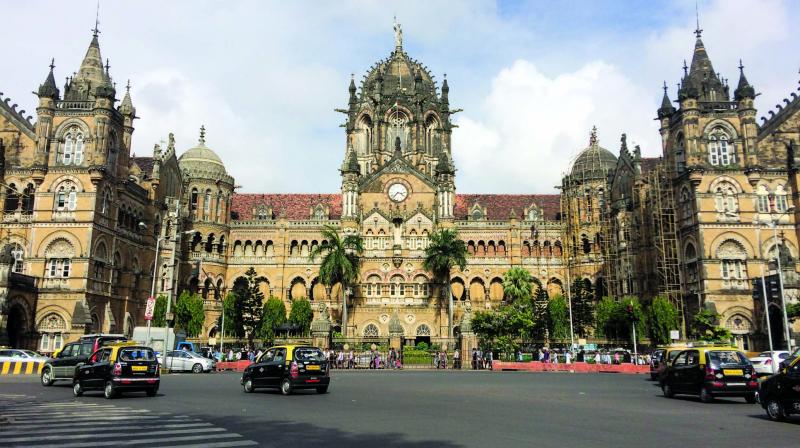
The iconic Victoria Terminus, now renamed to Chatrapati Shivaji Maharaj Terminus (CST) was opened to the public way back on June 20, 1887. Designed by F.W Stevens, the terminus was such an enormous build that it took over a decade to get all the intricacies and details right and finally finish the construction. It has influences from the Victorian English Era, Italianate Gothic Revival Architecture, and our own unique Indian style of building- all three culminated into one magnificent piece of architecture that has almost taken the universal symbol of the first touchdown in Mumbai. Even today thousands of people enter Mumbai through Chatrapati Shivaji Maharaj Terminus daily. There are marble statues beautifully carved and placed at the entrance of the terminus- a lion and a Royal Bengal Tiger- the former representing the British Monarchy and the latter, India.
It wasn’t until 1996, over a century and almost a decade later since its construction and about five decades since India won its independence as a republic- that the terminus was renamed to Chatrapati Shivaji Maharaj Terminus. An average estimated daily foot-count stands at over thirty lakh individuals, for the terminus- needless to say, it wasn’t meant to be just an aesthetic building. It has stood the test of time and managed to serve its purpose well over the years and seen a number of maintenance and upgrade sprees. CST is a UNESCO world heritage site and thus is protected against destruction, stating that ‘It’s one of the finest railway stations in the world, ever built’. Originally it was built to commemorate the golden jubilee of Queen Victoria back in England.
Some interesting bits about CST
When it was constructed, it was the very first railway station ever in India. The students from JJ School of Art, nearby, were hired and they came through to create a large chunk of the ornamental elements of the building such as the balustrades for the grand staircases, the wood carvings, tiles, and ornamental railings, etc. These students worked under the supervision of John Lockwood Kipling, who is better known as the father of the famed author and journalist Rudyard Kipling- the creator of one of the most iconic children’s books The Jungle Book, and it’s eccentric main character Mogli.
Bori Bandur, from Bori (Sack, of jute or similar sewn material) and Bundur from Bundergah (literal port for ships) was the name of the place where Chatrapati Shivaji Maharaj Terminus stands today. It was a place where the cargo from ships coming into Mumbai dock was stored, it was named literally for what purpose served. Even before CST was constructed, the Indian Railway’s first foundation was laid through Bori Bunder when the first train ever in India was run from Bori Bunder to Thane, a full 34 kilometers (decent numbers for the time) and later this expanded and overtook most of central Mumbai connecting every nook and cranny in a complex mesh of railway tracks.
An unsolved mystery is also entangled with CST. Right around 1950, the government of India released directives for all British Symbols, Imagery, and Memorial figures such as statues and sculptures to be removed from the government buildings. This included a statue of Queen Victoria that was installed right under the canopy on the clock on the main tower of the terminus, this statue was removed and placed in Queens’ Garden (late renamed to Rani Baug) until at least the early 80s, after which it was never seen again- no records of it being exported or removed exist. No one seems to have a hold of where the thing went and speculations have been made for it simply being sold off as a collectible or as exquisite artwork by politicians- now that is a conspiracy theory is I ever read one!
In 2008’s November, two terrorists managed to get past security undetected and enter the passenger hall of the terminus. Then something happened which can only be described as one of the worst and harrowing incidents to ever occur on Terminus grounds, they had AK-47s, grenades, they had training and they had planned it out and in a split second, they opened fire- gunning down innocents in the name of a hollow cause. Ajmal Kasab, a name that probably most Indians old enough to speak by 2008 remember and will remember for a while, was caught in this incident and proved to be a source of information against the true perpetrators of the larger/overall attack on Mumbai.
